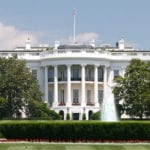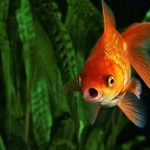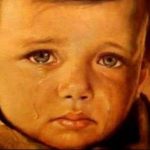 Weird Stuff
Weird Stuff  Weird Stuff
Weird Stuff  Our World
Our World 10 Ways Your Christmas Tree Is More Lit Than You Think
 Movies and TV
Movies and TV The 10 Coolest Stars to Set Sail on The Love Boat
 History
History 10 Things You Didn’t Know About the American National Anthem
 Technology
Technology Top 10 Everyday Tech Buzzwords That Hide a Darker Past
 Humans
Humans 10 Everyday Human Behaviors That Are Actually Survival Instincts
 Animals
Animals 10 Animals That Humiliated and Harmed Historical Leaders
 History
History 10 Most Influential Protests in Modern History
 Creepy
Creepy 10 More Representations of Death from Myth, Legend, and Folktale
 Technology
Technology 10 Scientific Breakthroughs of 2025 That’ll Change Everything
 Weird Stuff
Weird Stuff Ten Bizarre Facts About The Doge Meme
 Our World
Our World 10 Ways Your Christmas Tree Is More Lit Than You Think
 Movies and TV
Movies and TV The 10 Coolest Stars to Set Sail on The Love Boat
Who's Behind Listverse?

Jamie Frater
Head Editor
Jamie founded Listverse due to an insatiable desire to share fascinating, obscure, and bizarre facts. He has been a guest speaker on numerous national radio and television stations and is a five time published author.
More About Us History
History 10 Things You Didn’t Know About the American National Anthem
 Technology
Technology Top 10 Everyday Tech Buzzwords That Hide a Darker Past
 Humans
Humans 10 Everyday Human Behaviors That Are Actually Survival Instincts
 Animals
Animals 10 Animals That Humiliated and Harmed Historical Leaders
 History
History 10 Most Influential Protests in Modern History
 Creepy
Creepy 10 More Representations of Death from Myth, Legend, and Folktale
 Technology
Technology 10 Scientific Breakthroughs of 2025 That’ll Change Everything
10 Tough Truths about Life in the Jamestown Colony
It was back in May of 1607 when just over 100 Englishmen made land on the swampy shores of modern-day Virginia. They were sent to America under orders from King James to build and settle an English colony. So they decided to give their new home a proper name, befitting the man who sent them and called it Jamestown. With that, it became the first European colony in the New World. And history was made.
But life in the Western Hemisphere didn’t magically become smooth sailing after the crew made land. In fact, life in the Jamestown Colony was very, very hard. And it didn’t get (relatively) easier for many years after the men first settled in the area. Death and disease were everywhere, the weather was awful, relations with the natives they encountered were at times strained, and support from England was often rare and late in coming.
For the 104 men who first settled the land in England’s name—and for the men and women who eventually followed them over the next several decades—simply surviving was hard. So in this list, we’ll take a long look at ten harsh truths about life in the Jamestown Colony.
Related: 10 Failed Attempts To Colonize North America
10 Where Are the Women?
As you might expect, all the settlers who first arrived in Jamestown were men. When King James I granted the charter and ordered ships to sail away in December of 1606, all 104 people on board with the New World in mind were men and boys. Then, when they landed on May 14, 1607, they unpacked all their gear, set up camp, started working, and had not a single human of the fairer sex for companionship, partnership, love, or procreation.
Of course, procreation wasn’t exactly on their minds at first. The men who landed in what would become Jamestown Colony needed to settle in and just literally survive for those first few years. And with the king’s high expectations behind them in England, they no doubt felt pressure to do things well and establish a presence on behalf of their nation. The men were a cross-section of English society—adventurers, artisans, craftsmen, hunters, laborers, and more. But the need for settlers to be physically strong and capable cut a full 50% of the population out of the game.
So after months of hard labor, uncertainty, and grit, they started to feel the pangs of loneliness. Wouldn’t you? It took them nine long, excruciating months, but early in 1608, King James’s ships brought out a bunch of women to help populate the colony. By then, it was clear the New World needed a woman’s touch. And if the population were to ever grow in Jamestown from generation to generation, well, you know…[1]
9 Mail-Order Brides to the Rescue!
Thankfully, after less than a year of only men setting up the colony’s most pressing needs, the women swooped into the rescue. Back in England across the latter half of 1607, reports from Jamestown suggested New World horror stories. And at first, that was actually a major deterrent for English women. As is logical, the old country’s lovely ladies didn’t want to go across the Atlantic and step into an awful life in the colony. Plus, men who had initially settled Jamestown were already looking to leave and find brides back home. King James’ big plan for taking control of the New World suddenly seemed perilous in more ways than one.
Then, Edwin Sandys stepped in to save the situation. Sandys was the treasurer of the Virginia Company, which had overseen the colony’s push. He convinced the company’s other board members to start advertising for women to immigrate across the ocean to Jamestown. The purpose of these women was essentially that era’s version of a mail-order bride. Sandys specifically wanted English ladies to be incentivized to move to the harsh lands of the New World, marry these pioneers, settle down, have babies, and ensure the future of the colony for generations to come.
To do that, the Virginia Company started putting out ads back in England. And they sweetened the pot a good bit to entice women, too. They offered would-be wives free transportation across the Atlantic, a plot of land once they made their way to Jamestown, and even a dowry that paid for basic home necessities and clothing. Plus, the women would be allowed to choose their husbands for themselves after going on the 17th century’s version of a speed-dating routine with the colonists! It sounds crazy, but it worked well enough to attract a group of women. Eventually, the colony was populated with members of both genders.[2]
8 Women’s Lives Were Brutal
When women did finally show up to the colony years later, they had to be really, really tough to survive. Between 1620 and 1622, more than one hundred women landed in Virginia to help populate (and re-populate) the New World. Aside from the “mail-order brides” that came before them, some of these women were purchased by single men as wives. Others were added on as indentured servants. Still more were subjected to backbreaking work in the colony’s tobacco fields. Through it all, they suffered physical, emotional, and sexual abuse at the hands of men who had been toughened up by years of frontier living and no other access to the fairer sex.
England’s very clear hope was that having more women in Jamestown would inspire the men to stick around, make the colony better, and settle the entire region. That may have worked for the pioneers, but the women who followed had it really bad. Indentured women had to work long hours every day to pay off their debt. Then, once they were married off, they still had to work the fields and handle domestic labor that needed to get done.
For a time, the men of Jamestown loved that the women who came out were tough and hard-working. But that only went so far in a male-dominated society. By just a few decades into the New World surge, men had pushed back against any informal advances women might have made there. Take, for example, 1662.
That year, the General Assembly of the colony passed an infamous law allowing men to dunk their wives underwater should the women become too “argumentative” in the domestic realm. More crucially, the General Assembly also consolidated land holdings under men’s names, locking many women out of what would soon enough become quite a wealth-building process strung out over centuries.[3]
7 Soon Enough, Slaves Followed
Just a little more than a decade into the Jamestown experiment, in 1619, sailors brought the first ship full of captured Africans to North America. From there, the system of slavery quickly took hold in the colony. Of course, more than 200 years later, it would divide the nation-to-be into a terrible Civil War. But all that wasn’t even a thought when the first slaves landed in 1619. Instead, the idea was that the captured Africans would be enslaved to help with difficult manual labor and physically challenging tasks in order to get the colony off the ground.
Interestingly, the enslaved Africans weren’t even supposed to be in Jamestown at all. Initially, they were captured months before in what is now Angola by Portuguese sailors and slave traders. The Portuguese forced this captured group of dozens of men and women to march nearly 100 miles (161 kilometers) to a ship that was bound for what is now Mexico. Then, the ship set sail for the Caribbean Sea with the intention of dropping the slaves off in Spanish ports around the area to make some money for the Portuguese sea-faring traffickers.
That didn’t happen, though, because while out in the Gulf of Mexico, two English privateer ships came across the Portuguese vessel and decided to stage a raid. The two ships—the White Lion and the Treasurer—were successful in their pirate attack and stole several dozen Africans who had been aboard and bound for Mexico.
Then, the White Lion turned north and brought more than two dozen of those men and women to Jamestown in order to make a deal. From there, the rest was literally history—slavery soon enough became a central part of the colony’s culture and spread out west as the New World expanded.[4]
6 Climate Catastrophe Concerns!
Prior to arriving in Jamestown and settling down for more than a few weeks, Europeans assumed that the climate in North America would be roughly the same as what they were used to back home. However, the New World presented some interesting challenges for the pioneers almost from the outset. That’s because it was both significantly warmer than they’d expected (during the initial summer months) and then much colder than they thought it’d be (during that first winter and all following). The swampy, hot, humid summer very nearly broke the colonists’ will right from the very beginning. The ice-cold winter gave them a bit of whiplash and caused strife from the other end of the temperature spectrum.
It wasn’t just varying weather patterns that caused issues on their own, though. The broader climate changes that were going on all around the colonists pushed problems forth, as well. For one, we now know there was a “Little Ice Age” that lasted from about 1550 to nearly 1800 and went on in various ways worldwide. Of course, the Jamestown colonists had no idea about the science behind this. But they knew enough to realize it was frigid all winter long. Plus, those cold winters turned into remarkably wet springs, which then brought on hot, drought-filled summers and another round of frigid winters. All year long, they caught no breaks!
The drought-filled summers proved to be perhaps the most serious of all issues. From 1606 to 1612, Virginia experienced what we now know to be one of its driest summer periods ever. Each hot summer during those years was more brutal than the last. Crops died, livestock withered, and the people struggled mightily, as well. In some ways, it’s actually pretty surprising that the men (and, eventually, women) of Jamestown were tough enough to stick it out for as long as they did. After all, they caught no breaks from Mother Nature![5]
5 Big-Time Water Woes
If the climate was tough, the drinking water issue was even tougher. They didn’t have any kind of water purification systems back then like we know today—and no filter pitchers to pull out of the non-existent refrigerator to grab a drink and stay hydrated. Instead, Jamestown’s settlers had to figure out how to extract clean and suitable drinking water from their swampy settlement.
The problem with that area was that there were few reliable sources of fresh, drinkable water. River water was brackish and gross, and the fetid swamps were often even worse. Without natural springs, settlers had to get creative. They also had to take big risks as far as drinking contaminated water. Of course, it’s not like England had perfected water purification in the early 17th century or anything, but even their primitive methods were far beyond what little resources Jamestown’s men had at their disposal.
Not long after first landing in the middle of 1607, settlers started dying in fairly large numbers. By January 1608—just a little more than six months after first reaching Jamestown—more than half of the settlers had already died off. Per colonial records, some were killed in skirmishes with the Powhatan Indians and their native allies. But most succumbed to disease and famine. Today, historians roundly recognize that those diseases were often caused (or at least very significantly exacerbated) by dirty drinking water. High concentrations of feces, salt, dirt run-off, and other substances would have greatly contributed to Jamestown’s remarkably high mortality rate.[6]
4 What’s for Dinner?
Unfortunately for the settlers, in addition to the aforementioned disease problems, famine was also a serious early issue. And as you might suspect, going full growing seasons with little food to show for hundreds of hours of labor was a brutal way to exist. A little more than six months after the initial colonists landed in May of 1607, nearly 500 new settlers were brought into Jamestown. Over the next year, those 470-odd men and women tried to make the most of what their predecessors had established.
For a while, Captain John Smith worked tirelessly as their leader. He successfully negotiated a treaty with the powerful Powhatan tribe of that region of Virginia. But in the fall of 1609, Smith suffered an injury and had to return to England to recuperate. Nearly as soon as his ship set sail, the Powhatans saw their chance to rid themselves of these foreign invaders and set siege to Jamestown.
The settlers were eventually able to wall themselves off inside the fort at Jamestown and mostly avoid the indians’ aggression against them. However, being walled off in an enclosed area meant their gardens and farm plots were no longer accessible. And it didn’t take long for them to start eating whatever they could possibly find while in dire need of sustenance and nutrition.
Today, forensic evidence has suggested the early Jamestown settlers ate quite literally anything in the winter of 1609-10. As they were holed up inside the confines of the fort, they resorted to chowing down on dogs, rats, horses, and snakes. In a pinch, they even ate leather shoes for whatever few calories they could get. And, yes, they even ate each other. During the lowest point of that winter—which has famously come to be called the “starving time”—the settlers consumed at least one fellow dead colonist for the express purpose of their own survival as a group.[7]
3 Death? What Death?
That first year, as we’ve learned, was horribly brutal to the colonists. They lost well over half the men who had initially landed full of optimism, hope, and determination in May. And of the slightly more than three dozen who remained, the figurative (and literal) stench of death was becoming brutal. There was more work to be done, fewer people to do it, and the bodies were quite obviously piling up. Plus, King James and England’s elite still had very high hopes that the colony could make something of itself in the New World. As trite as the saying may sound on a matter like this, failure was not an option.
So the colonists decided to trudge on in a subtle and secretive manner. Not only did they wish to conceal the full extent of the awful first year from whoever may report back to the English, but they were also worried about much more pressing concerns: the Powhatan Indians. The natives near Jamestown had suspected the colonists were struggling, but they couldn’t quite tell the full extent to which that was true. That’s because the colonists were (rightly) concerned that revealing the actual number of deaths inside their walls would leave them open to a quick and brutal ambush.
So the colony opted to bury the dead in unmarked graves away from would-be prying Powhatan eyes. Plus, they buried the dead men two by two to draw even less suspicion to their rate of demise. Every time someone died, the colonists hid out of sight behind the fort’s walls, dug double-deep shafts, and paired off corpses as quietly and subtly as possible. In that way, the high rate of death appeared to be halved—or at least they hoped it would seem that way to Powhatan lookouts.[8]
2 Democracy Literally Began There
We don’t just mean to insinuate that “democracy started in Jamestown” because it was the first colony in what would later become the United States of America. While that’s true, we mean American democracy literally started there—as in, the colony counted the first votes in the New World.
Once the colonists got settled in the region, they established the House of Burgesses. It was a democratically elected group that made laws and carved out the way settlers would live and govern themselves. And all the men who were there (well, at least the ones who survived) got a vote. They cast their proverbial ballots and then lived with the consequences of who they collectively chose to lead their tenuous existence.
In turn, Jamestown’s House of Burgesses set a major precedent in North America. Henceforth, for every English settlement that was created up and down the eastern seaboard, the men who came to live there set up their own local legislatures. And in the same way as the Jamestown pioneers did, they put together those legislatures by popular vote. American democracy was a thing from quite literally the very beginning of it all!
Of course, there ended up being some limits, as you may have guessed. The aforementioned women and African slaves who showed up to Jamestown after a while weren’t granted the right to cast their lots in the future of the place. However, the fact that the Englishmen who settled were all able to vote was itself a major turning point. After all, the king-led culture they’d come from was very different, what with its top-down monarchy ruling over everything and all that.[9]
1 Tobacco Took (Secret) Hold
The colony may not have survived had it not been for developing tobacco as a bountiful and profitable cash crop. And all that may not have happened had King James I had his way. The monarch was very much an anti-tobacco advocate during his reign. He called the substance “loathsome to the eye” and “hateful to the nose.” Had he been geographically closer to Jamestown, it’s almost certain he would have stamped out any tobacco-growing endeavors in short order. But the colonists were thousands of miles from their king and had some flexibility to work as they pleased. Plus, to put it frankly, they needed the money.
For years after settling, Jamestown residents tried desperately to find a profitable New World venture. They tried primitive forestry and logging work, glassmaking, silk making, and other industries, but nothing stuck. They were unable to find any commodities profitable enough to consistently ship back to England. But that all changed about three years into their stay when John Rolfe returned to Jamestown with a group of 150 more settlers.
Along with him, Rolfe secretly brought a stash of little-known and likely smuggled South American tobacco seeds. Soon, it quite literally changed New World history. Historians today aren’t quite sure where he even got the seeds in the first place. It’s almost certain he smuggled them in from the Caribbean, but even that would be a considerable risk. At the time, Spain completely controlled the tobacco trade in European markets to the point that it was illegal to sell non-Spanish seeds. But Rolfe saw an opportunity—perhaps when he was shipwrecked in Bermuda for several months in 1609 prior to sailing on toward Jamestown—and the risk paid off.
Rolfe and his pals immediately started experimenting with how to grow the seeds in the Virginia ground. They messed up a bunch of times, but through trial and error, they eventually found their agricultural footing. Soon enough, even King James I saw the value of tobacco and its possible profits for England. He granted Jamestown a monopoly on the crop, and from there, they were off to the races.[10]








